8-minute read
keywords: paleontology
The opening of Fossils: The Essential Guide sets the tone as to who the intended audience is, with invertebrate palaeontologist Paul D. Taylor pointing out that palaeontology and archaeology are not the same thing. Ah yes, that old chestnut. To me, that means you intend to write a book for general readers who are interested but lack relevant background knowledge. Part of the long-running publishing programme of the London Natural History Museum (NHM), this is a whistlestop tour of life’s diversity as revealed by the fossil record. My take is that “It is good, but…”, as I feel the formula somewhat restricts it from being the accessible and thus truly essential guide that it wishes to be.
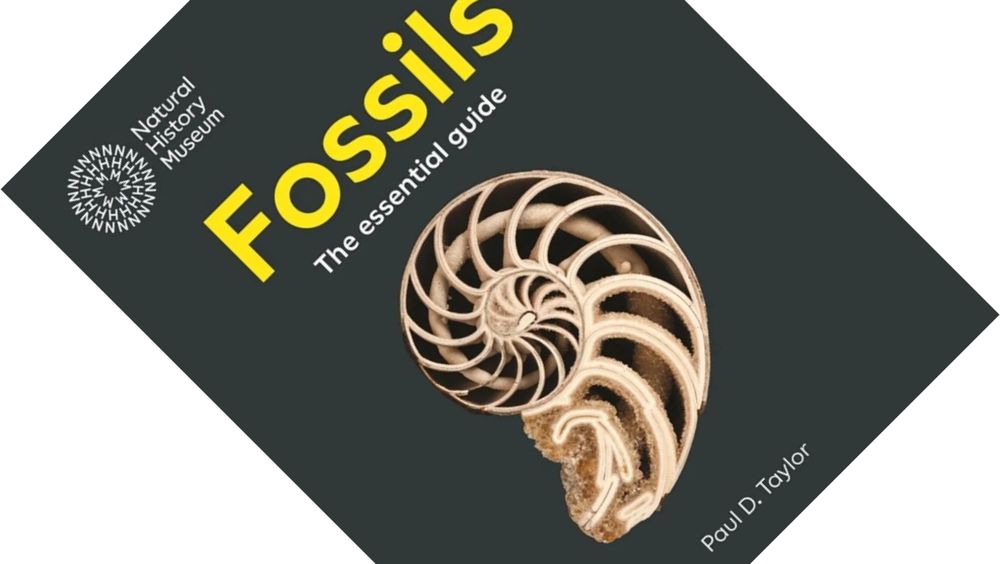
Fossils: The Essential Guide, written by Paul D. Taylor, published in Europe by The London Natural History Museum in February 2025 (hardback, 224 pages)
Given the level this guide is pitched at, it has several things going for it. For one, its coverage is balanced. Fossils are obviously about much more than dinosaurs; they feature, but appropriately enough get just four pages in the chapter on archosaurs. Instead, Taylor covers the whole tree of life, with six chapters on invertebrates and three on vertebrates. Add to that a useful introduction (What are fossils? How do they form? Where are they found? How are they named? How are they dated? etc.), and dedicated chapters on plant fossils, the all-important microfossils, and trace fossils. This book runs the full gamut of relevant topics. As a bonus, Taylor’s interest in fossil folklore means he adds references to 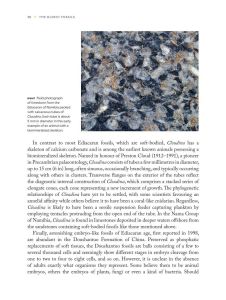 the role of fossils in beliefs, myths, and material culture, including the wonderful world of pavement palaeontology: spotting fossils in the building stones used in e.g. pavements, floors, or columns.
the role of fossils in beliefs, myths, and material culture, including the wonderful world of pavement palaeontology: spotting fossils in the building stones used in e.g. pavements, floors, or columns.
Some of what people think they know about fossils and palaeontology will be outdated or outright mistaken. The book’s second strong suit is thus that Taylor incorporates modern thinking and the latest developments. For example, he briefly mentions the debate around the nature of the Cambrian Explosion, and whether it really was a sudden diversification of life or more of a slow fuse. He adopts modern taxonomical concepts[1], mentioning insects as part of Pancrustacea and adopting the four superorders for placental mammals (Afrotheria, Xenarthra, Laurasiatheria, and Euarchontoglires). Another recent development that is included is the revised size estimate for the well-known placoderm fish Dunkleosteus, which might have been more stubby than it used to be depicted. And in a book for a general audience, it never hurts to reiterate that considering humans as the pinnacle of evolution is “seriously flawed” (p. 183). Where textbooks used to depict horse and human evolution as single-lineage affairs leading to modern forms, modern thinking interprets both as more complex, branching processes with plenty of dead ends. Talking about fossils also allows him to highlight important related concepts, such as convergent evolution or uniformitarianism. Lastly, I think the chapter on microfossils is really well written, explaining their importance and utility in stratigraphical correlation of rocks, and detailed tracking of past ecological, climatological, and evolutionary changes.
“Fossils are obviously about much more than dinosaurs; they feature, but appropriately enough get just four pages in the chapter on archosaurs. Instead, Taylor covers the whole tree of life.”
That said, there are a few places where I feel Taylor misses a beat and could have done more to emphasize points that are frequently confused. He mentions the concept of paraphyly when pointing out that fish is what remains after you have removed all the other vertebrate groups. So why not mention polyphyly when you point out that corals or worms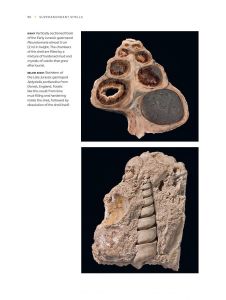 are not a single taxonomic group? They are just convenient labels we apply to similar-looking groups of organisms that do not share direct ancestry. He similarly does not mention the concept of exaptation, even as he gives an example of it. The bony fish Tiktaalik did not evolve lungs to conquer the land but likely to deal with oxygen-poor waters, only to later repurpose these structures. People still often ascribe a goal-directedness to evolution where it is not appropriate. More could have been made of the different species concepts used in palaeontology. Even as he highlights how species names for plant and trace fossils work very differently, he does not contrast this with the biological species concept or the morphological species concept used for body fossils. Finally, in a book for a general audience, it is worth reminding them that the beautiful photos do not reflect how fossils are pulled out of the ground! Each of these has been worked on by skilled preparators whose contributions are all too often overlooked. All told Taylor inserts only three boxes to briefly explore related topics, and I think there could have been more of them.
are not a single taxonomic group? They are just convenient labels we apply to similar-looking groups of organisms that do not share direct ancestry. He similarly does not mention the concept of exaptation, even as he gives an example of it. The bony fish Tiktaalik did not evolve lungs to conquer the land but likely to deal with oxygen-poor waters, only to later repurpose these structures. People still often ascribe a goal-directedness to evolution where it is not appropriate. More could have been made of the different species concepts used in palaeontology. Even as he highlights how species names for plant and trace fossils work very differently, he does not contrast this with the biological species concept or the morphological species concept used for body fossils. Finally, in a book for a general audience, it is worth reminding them that the beautiful photos do not reflect how fossils are pulled out of the ground! Each of these has been worked on by skilled preparators whose contributions are all too often overlooked. All told Taylor inserts only three boxes to briefly explore related topics, and I think there could have been more of them.
Though I liked the book, I admit that, even as an evolutionary biologist with more than a passing interest in palaeontology, I struggled with some of the chapters on invertebrates, particularly chapters 5–7 that cover numerous lesser-known groups besides trilobites and ammonites. To explain why, I must go on a somewhat long-winded diversion, so bear with me.
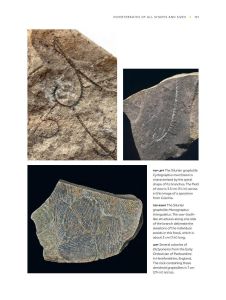 The NHM has a long history of publishing popular books on palaeontology and evolutionary biology that are readily available in its gift shop, as well as in the wider book trade. Taylor, whose speciality is bryozoans, has in the past co-authored Fossil Invertebrates and more recently A History of Life in 100 Fossils, but there are also primers on the history of plants and dinosaurs in 50 fossils each. Long-time museum visitors may well wonder how this book compares to Fossils: The Key to the Past from the late and great Richard Fortey that, by my reckoning, went through five editions between 1982 and 2015. Tempting as it is to call this the spiritual successor, I do not think that is quite right. Fortey’s book was about the study of fossils (how you recognize and collect them) and what such study reveals about extinction, evolution, and the origin of life. Taylor’s book is instead an overview of all the major groups of extinct organisms. Even so, all these books follow a pretty rigorous brief: they are limited in extent, have to be affordable, and frequently draw on both the expertise of the museum’s research staff for the writing, and its extensive collections of natural history objects for the photography. Comparing publicly available internal images for all these books shows a certain repetition, suggesting the museum is drawing on an image bank during production.
The NHM has a long history of publishing popular books on palaeontology and evolutionary biology that are readily available in its gift shop, as well as in the wider book trade. Taylor, whose speciality is bryozoans, has in the past co-authored Fossil Invertebrates and more recently A History of Life in 100 Fossils, but there are also primers on the history of plants and dinosaurs in 50 fossils each. Long-time museum visitors may well wonder how this book compares to Fossils: The Key to the Past from the late and great Richard Fortey that, by my reckoning, went through five editions between 1982 and 2015. Tempting as it is to call this the spiritual successor, I do not think that is quite right. Fortey’s book was about the study of fossils (how you recognize and collect them) and what such study reveals about extinction, evolution, and the origin of life. Taylor’s book is instead an overview of all the major groups of extinct organisms. Even so, all these books follow a pretty rigorous brief: they are limited in extent, have to be affordable, and frequently draw on both the expertise of the museum’s research staff for the writing, and its extensive collections of natural history objects for the photography. Comparing publicly available internal images for all these books shows a certain repetition, suggesting the museum is drawing on an image bank during production.
“Some of what people think they know about fossils and palaeontology will be outdated or outright mistaken [thus] Taylor incorporates modern thinking and the latest developments.”
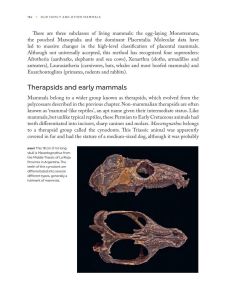 The point of the above diversion is that I feel this formulaic approach somewhat restricts this book when it comes to the chapters on invertebrates. These are organisms that are unfamiliar to most people, myself included, as we just do not encounter them in our daily lives. Much of the text here is spent describing their anatomy and morphology and this invariably involves jargon. This is not a knock against Taylor; given that these groups are mostly studied by experts, it is hard to talk about them in any other meaningful way. However, when you are describing e.g. echinoids and write that “ambulacra and interambulacra converge on an apical disc at the top of the test, and on the peristome on the underside where the mouth is situated” (p. 135) to an audience that needed to be told archaeology and palaeontology are not the same thing, well, that is where the illustrations fall somewhat short. I have three ideas, not mutually exclusive, that could make these chapters more accessible. First, though the selection of photos is good (they are well-lit, sharp, nicely reproduced, etc.), they really could have done with labels pointing out relevant features. I wrote the same about the dinosaur guide, but there are a few photos where I am not even sure what I am looking at, or supposed to look for. A second useful addition would have been line drawings showing what these creatures looked like in life and as fossils, with labels pointing out the jargon mentioned in the text. Page 46 features just such a drawing for the trilobite body plan, but is the only one. More of this, please! And yes, I realise this would mean hiring an illustrator. Third, and tying in with number two, though Taylor
The point of the above diversion is that I feel this formulaic approach somewhat restricts this book when it comes to the chapters on invertebrates. These are organisms that are unfamiliar to most people, myself included, as we just do not encounter them in our daily lives. Much of the text here is spent describing their anatomy and morphology and this invariably involves jargon. This is not a knock against Taylor; given that these groups are mostly studied by experts, it is hard to talk about them in any other meaningful way. However, when you are describing e.g. echinoids and write that “ambulacra and interambulacra converge on an apical disc at the top of the test, and on the peristome on the underside where the mouth is situated” (p. 135) to an audience that needed to be told archaeology and palaeontology are not the same thing, well, that is where the illustrations fall somewhat short. I have three ideas, not mutually exclusive, that could make these chapters more accessible. First, though the selection of photos is good (they are well-lit, sharp, nicely reproduced, etc.), they really could have done with labels pointing out relevant features. I wrote the same about the dinosaur guide, but there are a few photos where I am not even sure what I am looking at, or supposed to look for. A second useful addition would have been line drawings showing what these creatures looked like in life and as fossils, with labels pointing out the jargon mentioned in the text. Page 46 features just such a drawing for the trilobite body plan, but is the only one. More of this, please! And yes, I realise this would mean hiring an illustrator. Third, and tying in with number two, though Taylor  defines most jargon upon first usage, a glossary, ideally an illustrated one, could have been another option.
defines most jargon upon first usage, a glossary, ideally an illustrated one, could have been another option.
Overall, this book does a great job of giving equal attention to all the major fossil groups, including the less sexy ones. In the process, Taylor brings the reader up to speed on current thinking while clarifying relevant concepts that are often misunderstood. That said, more could have been done with the selection and execution of illustrations to help readers understand the unavoidable anatomical jargon. For me, Fossils: The Essential Guide falls just short of being excellent, instead being good but potentially challenging in places.
1. ↑ Remarkably, he does not mention the recently proposed shakeup![]() in higher-level dinosaur taxonomy, even though the first author, Matthew G. Baron, is affiliated with the NHM.
in higher-level dinosaur taxonomy, even though the first author, Matthew G. Baron, is affiliated with the NHM.
Disclosure: The publisher provided a review copy of this book. The opinion expressed here is my own, however.
Other recommended books mentioned in this review:
__________________________________________________________________
__________________________________________________________________
__________________________________________________________________
__________________________________________________________________
__________________________________________________________________

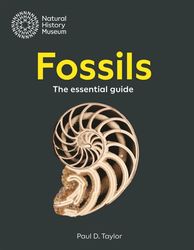
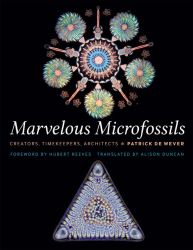
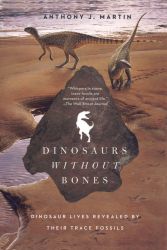
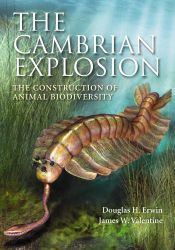
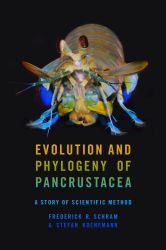
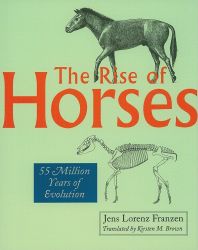
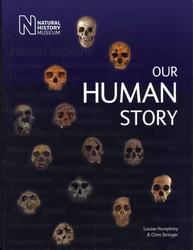

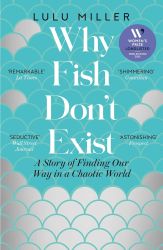
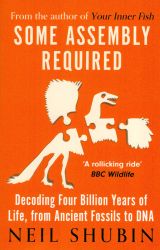
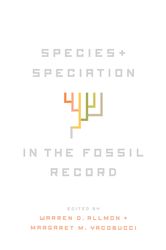
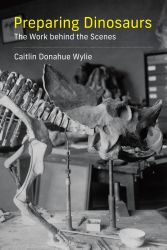
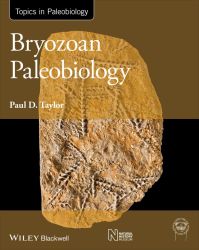
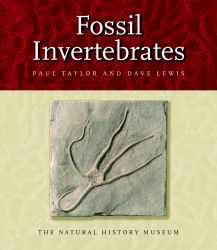
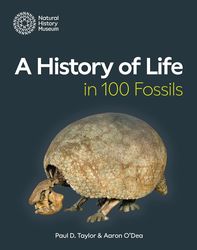
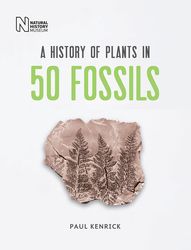
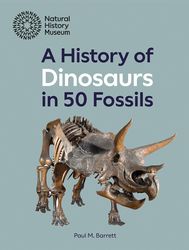
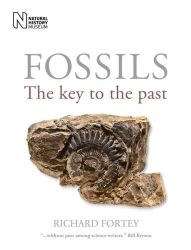
A very interesting review, I must say that I find titles with such phrases as “Essential Guide” in them a little… too attention seeking, but it does seem like a potentially above average publication. You point out quite a lot of its problems here, I can imagine where you’re coming from. I’m a vertebrate paleontology geek, and invertebrate paleontology is kind of distant to me, but I can imagine that for example mentioning the polyphyly of corals would be nice if paraphyly of fish is mentioned…
When it comes to people’s misguided sense of goal-directedness of evolution by the way, I really have a feeling that reading S. J. Gould’s old essays would do them a lot of good. That kind of intelligent popular science literature (I mean his Natural History essays) can really easily explain a lot to complete laymen. Gould was constantly stressing that evolution has no goal, and no purpose.
LikeLiked by 1 person
Agreed, I find that calling books “essential” or “complete” is more a marketing move by big trade publishers such as the Dorling Kindersleys of this world, rather than an indication of how thorough such books are.
After reviewing Macroevolutionaries some time ago I have made it my mission to slowly collect the original hardback run of the ten collections of his essays. They are classics indeed, and I have shamefully read too few of them.
LikeLike
I have devoured the first three volumes of Gould’s essays (Ever Since Darwin, The Panda’s Thumb and Hen’s Teeth and Horse’s Toes), and I can totally recommend them. There’s a wonderful consistency there, even though he sometimes repeats himself (what can be read in one volume can be presented in another one but in a slightly different form and with some addition) but it still fosters a kind of evolutionary biological mindset that would benefit the entirety of our society. I think it’s still relevant to read them.
LikeLiked by 1 person